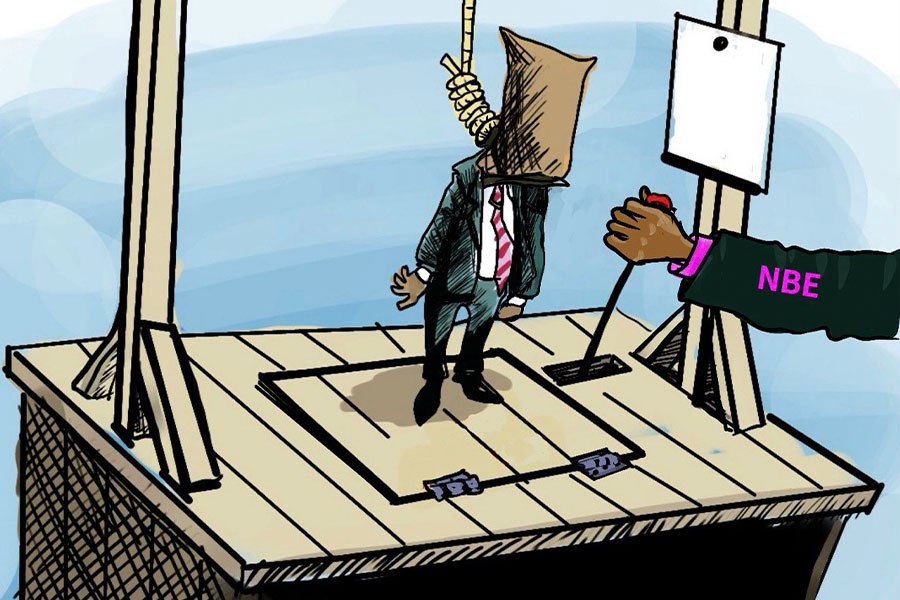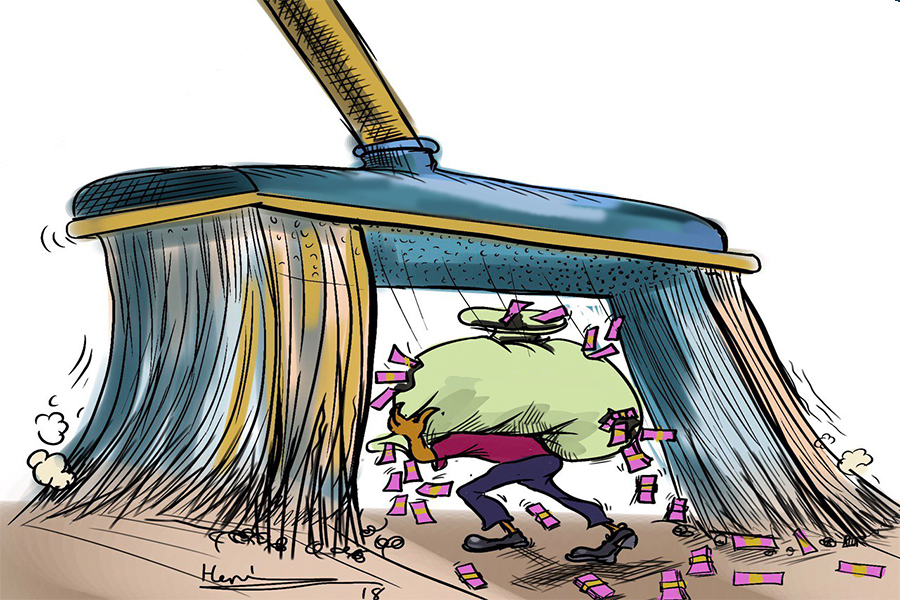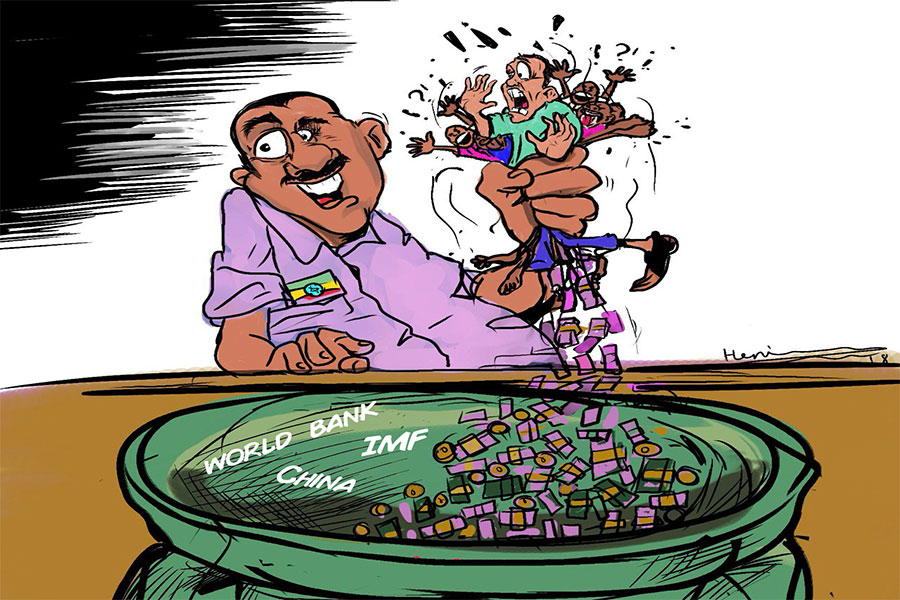
.
The foreign exchange market has been quirky lately, marked by sudden shifts and divergent strategies among commercial banks and the Central Bank.
Abay Bank (ABY) captured the limelight with an unexpectedly low buying rate of around 120.062 Br to the Dollar, departing sharply from the 124.9 Br range common among its peers. An anomaly spanned three days last week; this might have come from internal liquidity strains or a misalignment in pricing to attract short-term forex inflows. By January 24, Abay Bank appeared to revert to near-market levels, signalling exceptional measures its forex managers had taken to boost dollar receipts that were no longer in play.
Most banks maintained a two percent spread between their buying and selling rates during this period, but the National Bank of Ethiopia (NBE) was distinctly more volatile. On January 21, the Central Bank’s spread was 0.99pc, climbed to 1.23pc between January 22 and 23, then dipped toward one percent by January 25. The swing could be part of an ongoing regulatory fine-tuning or testing of short-run policy tools meant to keep the market in balance.
Yet, the unpredictable approach by the Central Bank contrasted with the more uniform tactics used by most commercial lenders, who largely kept their margins within its imposed limits.
Enat Bank (ENT) and Tsehay Bank (TES) established themselves at the upper end of the market, with buying rates surpassing 125 Br. They were vying to secure hard currency from exporters and remittance senders, a possible indicator of intensifying competition for scarce forex. Global Bank (GBE) and Hibret Bank (HB), meanwhile, took a more conservative position, showing lower-than-average rates in GBE’s case and a steady, albeit premium, selling price of 127.98 Br at HB. This pricing could result from an effort to avoid sudden shocks, even if it means letting high-rate banks scoop up a greater share of forex transactions.
Nib Bank also joined the ranks of lenders that quoted above 125 Br for buying last week. Tsehay Bank, whose executives have already taken an assertive position, edged closer to 126 Br and has now led the market for four consecutive weeks. The state-owned Commercial Bank of Ethiopia (CBE) continued offering the lowest buying rate — still below 125 Br — a clear sign it remains a crucial policy tool for containing volatility. CBE’s status as the largest bank in the country and as a quasi-policy instrument has historically exerted downward pressure on private banks’ attempts to adjust their rates aggressively.
A downward drift of the Brewed Buck against the Green Buck accelerated for roughly six days, beginning on January 20. The market’s average buying rate was 124.8 Br, and the average selling rate topped 127 Br. Banks such as Goh Betoch Bank (HoH) and ZamZam Bank frequently posted higher numbers than their competitors, while the major players, including CBE, generally maintained more moderate quotes. Tsehay Bank remained at the forefront of private banks, frequently nearing the 126 Br thresholds in its drive to capture larger forex from exporters and the diaspora.
A catalyst behind the continued drop in the rate of Brewed Bucks was the Central Bank’s daily weighted average crossing 125 Br (for a third week), an event many see as psychologically important. Faced with persistent forex shortages, officials appear to be weighing whether to let the Birr weaken further or inject more dollars into the system. The four biggest private banks — Awash, Dashen, Abyssinia, and Wegagen — have all responded by setting more conservative rates, generally below the new 125 Br benchmark.
There appears to be a conscious effort among these banks' forex managers to slow Birr’s decline and uphold Governor Mamo Mehirtu's monetary policy objectives.
Yet, a handful of private banks have pursued a different path.
Gadaa, Goh Betoch, and ZamZam banks have consistently offered higher rates on both ends of the exchange. Goh Betoch’s buying rate has been north of 125.4 Br, with selling hitting 128 Br, while ZamZam has also positioned itself to draw inflows from remittances and exports. Such steps might help smaller banks carve out a niche, though they risk fueling greater volatility if the Central Bank's efforts with tighter monetary policies.
The market has effectively sorted banks into tiers as Tsehay and Nib banks were at the upper end with buying rates that exceed 125 Br, revealing an eagerness to absorb hard currency. By comparison, CBE anchors the lower end near 124 Br, acting as a stabilising ballast. Banks such as Dashen, Awash, Wegagen and Abyssinia occupied a middle zone, largely heeding Central Bank signals to avoid triggering bigger shocks.
In the coming days, a mild appreciation of the Birr could be anticipated, with forecasts showing a modest rise in the average buying rate from 125.18 Br to around 125.41 Br, and the average selling rate inching up from 127.57 to roughly 127.80. While not dramatic, this gentle upward shift could signal the Birr might benefit from a combination of steady external inflows and a slight easing in import demand. Commercial banks could see more uniformity in their quotes, aligning their spreads with the NBE’s signals if that holds.
PUBLISHED ON
[ VOL
, NO
]

Photo Gallery | 180458 Views | May 06,2019

Photo Gallery | 170657 Views | Apr 26,2019

Photo Gallery | 161714 Views | Oct 06,2021

My Opinion | 137285 Views | Aug 14,2021

Nov 1 , 2025
The National Bank of Ethiopia (NBE) issued a statement two weeks ago that appeared to...

Oct 25 , 2025
The regulatory machinery is on overdrive. In only two years, no fewer than 35 new pro...

Oct 18 , 2025
The political establishment, notably the ruling party and its top brass, has become p...

Oct 11 , 2025
Ladislas Farago, a roving Associated Press (AP) correspondent, arrived in Ethiopia in...